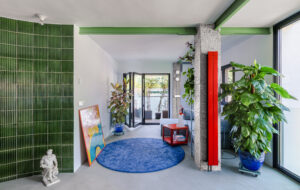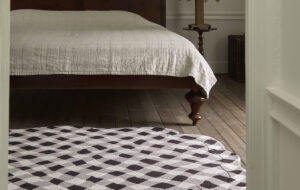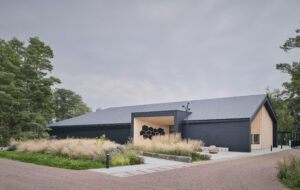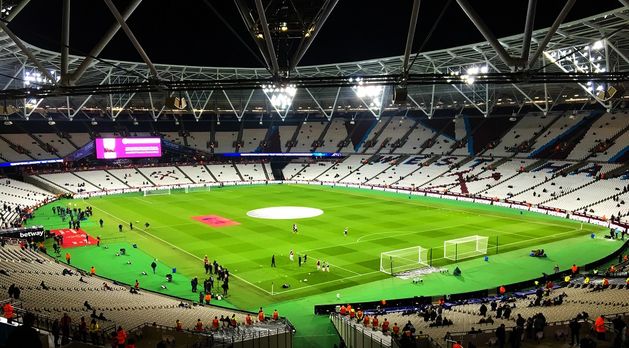 Inside the London Stadium, formerly the Olympic Stadium
Inside the London Stadium, formerly the Olympic Stadium
As the Premier League kicks off, Mark Gower explores how the interior design of a stadium can be used to give players an advantage on the pitch
Given football is played on largely regular-sized pitches and both teams compete with the same number of players, why does playing at home provide such a significant advantage?
Many of the reasons for this advantage are well researched and documented: home crowd hostility, referee bias, travelling to away matches and player psychology. This research aims to explore something new by looking at the advantage the interior architecture a stadium can provide – if players can improve their reading of space and the interior architecture of stadia it could give them crucial extra time to make decisions. This clearer understanding of playing space and environment can improve player performance and team results both at home and away.
Football’s interior architecture is much more than an arena for watching a football match: it is the hidden 12th man on the pitch. The current design of football stadia has become homogeneous and focuses mainly on fan experience rather than the key user, the players. Significant amounts of money are spent in professional football analysing performance with a view to gaining a marginal advantage over a team’s competitors. Analysts monitor player performance, tactics and the opposition before providing feedback to coaches for training. This research opens up a whole new perspective, and could provide significant gains to a team’s performance.
Football is reliant on a series of spatial relationships: player to player, player to ball, and player to pitch. All movements are spatially related but none of the existing analysis into player performance takes into account the player’s spatial relationship with this fourth dimension: the stadium and surrounding architecture.
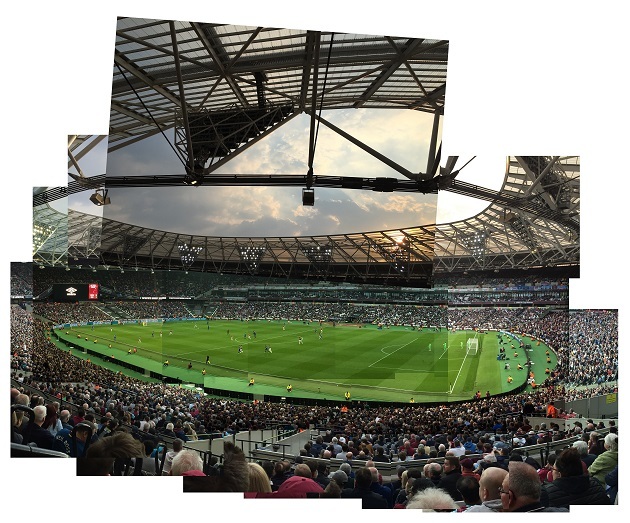 London Stadium collage, courtesy of Mark Gower
London Stadium collage, courtesy of Mark Gower
When playing at a home ground among familiar surroundings, players should be able to make faster decisions. For example when a player receives a pass, before the ball even requires a touch, they should already possess coded information about where they are on the pitch so they don’t have to waste time looking around to locate their position; they should know where they are by reading the physical reference points that surround them: advertising hoardings, dugouts, a manager, a ball boy, a microphone boom or even the position of water bottles (see the image above). The clear understanding of a player’s three-dimensional environment and the space they operate in can lead to an improvement in movement and an increase in decision-making speed, which will provide them with a distinct advantage.
Without having to look up, a professional football player should already know their next move. Just like a chess player, they have built up an inner knowledge of spatial patterns of play, and through experience of playing they are able to recognise or ‘chunk’ these patterns of play quickly, almost without knowing they are doing it. But, when elite footballers are new to a position, stadium or playing away from home, they require time to orientate themselves, which takes up valuable seconds and places them at a disadvantage.
An elite footballer’s ability is often simplified as instinctive but I argue that instinct can be developed, and could be improved upon through meticulous preparations of spatial patterns in training, by setting up and recreating competitive match scenarios to store in a player’s mind, and by using visualisation techniques. Mental imagery, coupled with repetitive training of realistic match scenarios, improves footballer’s understanding of spatial patterns.
On top of this, the role of context during training should be fundamental, replicating as much of the physical playing environment as possible. Too many drills take place in generic settings on training grounds – these sessions lack authentic contexts and the situations are not reflective of match day conditions. The key to improving a footballer’s spatial awareness is enabling them to read the interior architecture of a football ground, including key markers on and off the pitch.
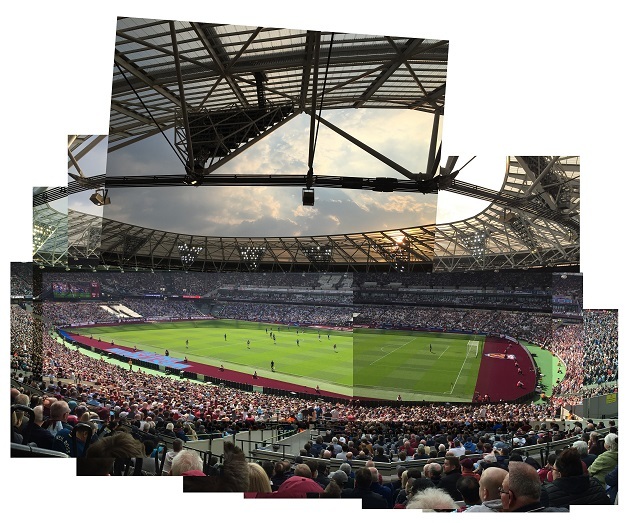 London Stadium montage with the claret carpet courtesy of Mark Gower
London Stadium montage with the claret carpet courtesy of Mark Gower
The newly installed claret carpet surround (see the image above) at the London Stadium – the new home of West Ham United – shows how simple stadium markers off the pitch can be adapted and used as reference points for players to measure space and time more precisely. Footballers’ who pay meticulous attention to objects, signposts and players within a football arena will calculate and calibrate distances more quickly and act instinctively.
Ultimately, understanding the interior space of a football stadium, on and off the pitch, can bring great gains to a player’s performance – home advantage isn’t just about the fans, but the stadium, too.
Excerpt taken from Mark Gower’s unabridged research essay – A football player’s sense of space and the advantage of playing at home – to be found in Encompassing: Research: Essays from the School of Crafts & Design (Eds. Millar & Olding) Published by: University for the Creative Arts (UCA) 25 August 2019.
Mark Gower is the course leader of interior architecture and design at the University for the Creative Arts (UCA) Farnham







